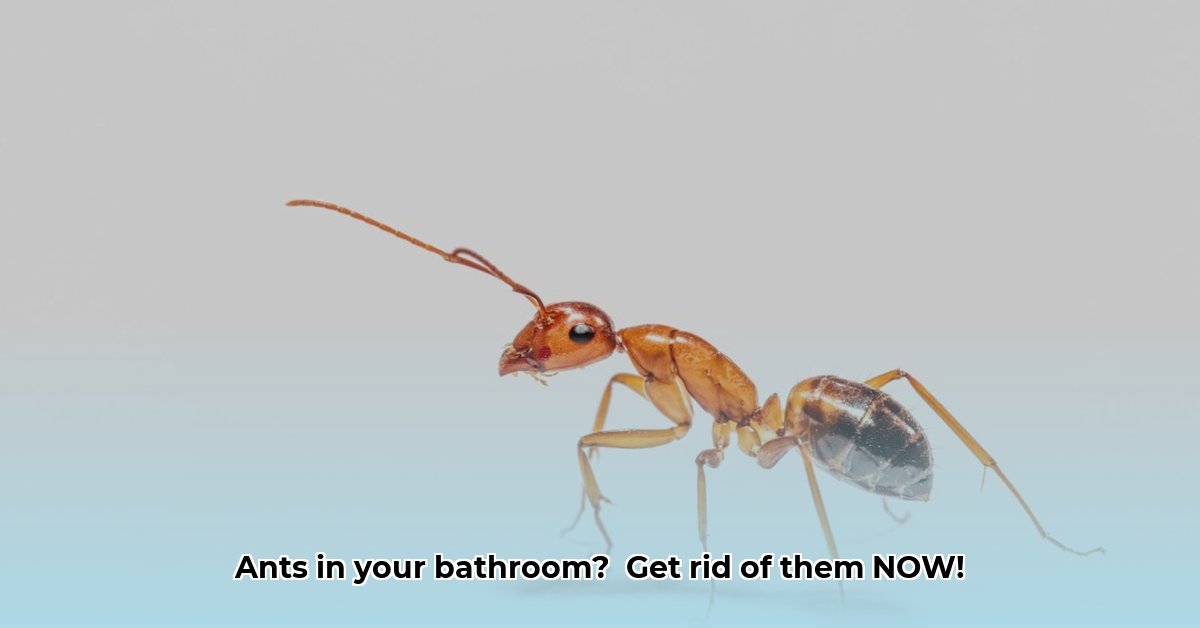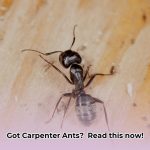Decoding the Ant Invasion: Why Your Bathroom?
Ants in the bathroom are a common nuisance. They’re not there because you’re a messy housekeeper, but because bathrooms, even the cleanest ones, often unintentionally provide the two things ants crave: water and food. Even seemingly insignificant moisture sources like a leaky pipe, condensation on the mirror, or a damp bathmat can be a welcome oasis for thirsty ants. Similarly, microscopic toothpaste residue, soap scum, or stray hairs can provide sustenance.
Common Questions, Simple Answers
- Why ants in my bathroom, especially in winter? Likely seeking warmth and humidity to escape the cold.
- Why ants in my bathroom sink? Probably attracted to moisture around the drain or residual food particles.
Identifying the Culprits: Ant Sleuthing 101
Knowing the type of ant you’re dealing with helps determine the most effective removal strategy. While many bathroom ants appear as small black dots, closer inspection reveals distinct characteristics:
| Ant Species | Size (approx.) | Color | Body Shape | Distinguishing Features |
|---|---|---|---|---|
| Odorous House Ant | 1/16 – 1/8 inch | Brown to Black | Oval | Emits a rotten coconut smell when crushed. |
| Pharaoh Ant | ~1/16 inch | Yellowish to Reddish | Slender | Tiny, light-colored, prefers sweets. |
| Little Black Ant | ~1/16 inch | Black | Oval | Uniformly dark, nests outdoors, creates indoor trails. |
Beyond the table, other clues can help:
- Size and Shape: Note subtle differences in size and whether the body is more rounded (Odorous House, Little Black) or slender (Pharaoh).
- Color: While many are black, some are brown or reddish.
- Trails: Observe where ant trails begin and end, and what attracts them. Odorous House ants, for instance, are often found near moisture.
- The Sniff Test: Gently crush an ant (just one or two). A rotten coconut smell confirms Odorous House ants.
Unsure? Pest control websites and professionals can help identify the species and recommend appropriate actions. Ongoing research continually updates our understanding of these tiny invaders.
Eviction Time: Effective Removal Strategies
Here’s a step-by-step guide, from basic cleaning to professional intervention:
1. Deep Clean: Regularly wipe down surfaces, paying close attention to hidden areas, and empty the trash frequently.
2. Dry It Out: Fix leaky faucets, wipe up spills immediately, and ensure good ventilation to minimize humidity.
3. Seal the Entry Points: Caulk any cracks or gaps around pipes, tiles, and windows.
4. Natural Remedies:
- Vinegar Spray: Mix equal parts white vinegar and water. Spray on ants and along trails to disrupt their scent markers. Ongoing research further suggests vinegar’s acidity might harm their exoskeletons.
- Borax Bait: Mix borax with sugar and place small amounts near entry points. Borax is toxic to ants, disrupting their digestive systems. Caution: Keep away from children and pets.
- Diatomaceous Earth (Food Grade): Sprinkle this powder along trails and entry points. The microscopic particles damage ants’ exoskeletons, leading to dehydration. Caution: Avoid inhaling.
5. Commercial Ant Traps: Place these baited traps near ant trails. Ants carry the poisoned bait back to the colony.
6. Insecticides: Use insecticide sprays or powders for persistent infestations, following product instructions carefully and ensuring proper ventilation.
7. Professional Pest Control: For recurring or severe infestations, consult a pest control professional. They possess the expertise and specialized treatments for effective elimination.
Choosing Your Strategy:
| Method | Pros | Cons | Effectiveness | Cost | Safety |
|---|---|---|---|---|---|
| Cleaning & Sealing | Prevents infestations, eco-friendly | Requires ongoing effort | High | Low | Very Safe |
| Natural Remedies | Generally safe, easily accessible | May need repeated applications, varied results | Moderate | Low | Generally Safe |
| Commercial Ant Traps | Targeted, convenient | May not eliminate entire colony | Moderate | Moderate | Generally Safe |
| Insecticides | Effective for larger infestations | Can be toxic, requires careful handling | High | Moderate | Use with Caution |
| Professional Pest Control | Expert knowledge, reliable results | More expensive | Very High | High | Varies |
Prevention: Keeping Ants Away for Good
Consistent preventative measures are essential for long-term ant control:
- Consistent Cleaning: Regular wiping, sweeping/vacuuming, and prompt trash disposal eliminate food sources.
- Moisture Control: Maintain a dry environment by addressing leaks and ensuring good ventilation.
- Entry Point Monitoring: Regularly inspect for new cracks or gaps and seal them promptly.
Troubleshooting: Persistent Ants?
If ants return:
- Re-evaluate: Did you miss an entry point, a food source, or a leak?
- Try different methods: Combine natural remedies with traps, or consider insecticides.
- Seek Professional Help: Don’t hesitate to contact a pest control expert for stubborn infestations.
By understanding ant behavior and employing a combination of these strategies, you can effectively eliminate ants from your bathroom and maintain a pest-free sanctuary. Remember, keeping up with these practices is the best way to prevent future infestations.
- How Much Do Wellness Programs Cost Businesses To Offer? - December 16, 2025
- Wellness Fair Ideas for Work to Boost Employee Wellbeing - December 15, 2025
- Affordable Employee Wellness Fair Ideas for Any Budget - December 14, 2025
















